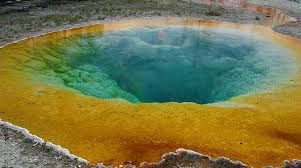September 2, 2014 – What seems absolutely reasonable is apparently true. Expose microbes to extreme environments and those that survive evolve and adapt more rapidly. A study appearing in Scientific Reports in August looked at six diverse natural environments and 40 meta-genomic samples to report on relative evolutionary rates in the microbial community. Environments included acid mine drainage, saline lakes, and hot springs. Evidence showed high mutation rates among microbes.
Scientists used to think that extreme environments produced specific microbes that through evolutionary adaptation reached a state of equilibrium with their surroundings. But it appears that adaptation in extreme environments leads to genome plasticity with microbes constantly undergoing DNA changes to readjust to a dynamic environment.
Scientists call microbes in these environments, extremophiles. And they are turning out to be an important source of new discoveries with many being used to develop industrial, medical and commercial applications.
In 1993 workers at Texaco discovered a subsurface microbe living at depths of 2,800 meters (9,100 feet). This microbe flourished in the extreme heat and pressure of the underground environment. It incorporated magnetic material into its cellular structure making it potentially useful for a number of industrial purposes such as the creation of super-fine magnetic coatings for computers, motors and drill bits.
Other extremophiles have been found living in the containment water of nuclear reactors and may prove useful in limiting pollution from nuclear waste. Extremophiles found in deep underground gold mines feed on hydrogen and CO2, producing acetic acid, and breaking down polluting sulfates.
And now we understand that the extremophile discoveries we make are merely a snapshot in the evolution of this form of life. Because microbes in extreme environments have adaptive strategies capable of evolving faster than any other life forms on our planet, and probably anywhere else in the Universe where microbial life is found.
Why this study is so important – because it is the first to directly compare microbes in extreme and benign environments and look at their adaptive and evolutionary characteristics. What the researchers have found may very well explain how life managed to proliferate in the extreme environment that was Earth some 4 billion years ago. And it may also give us some hope, that if microbial life developed on Mars, somewhere it has and continues to evolve in the extreme environment of that planet.





















